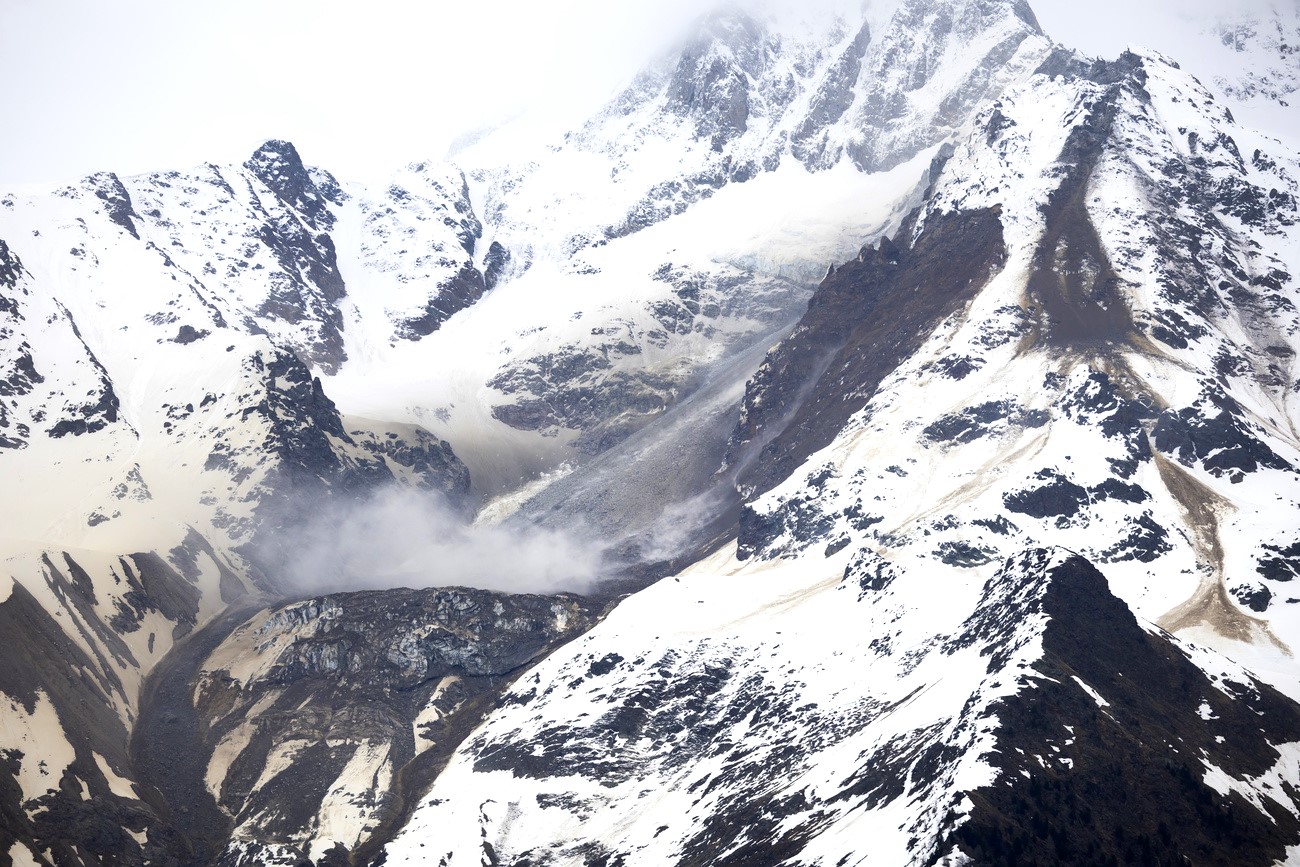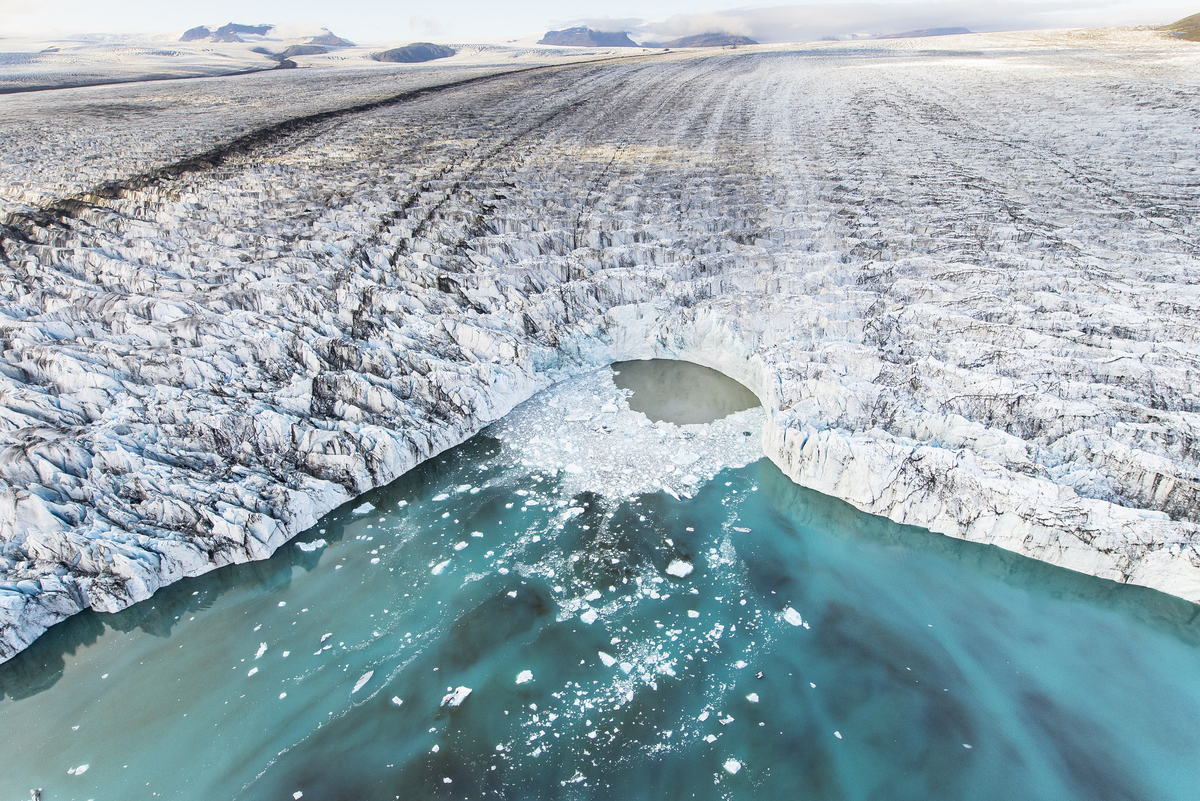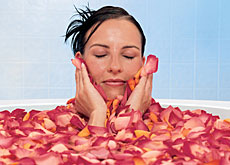Edelweiss industry blooms in Valais

The edelweiss, the flower that symbolises the Swiss Alps, is being commercialised with great success and is ending up in anti-wrinkle creams and sun lotions.
A cooperative of farmers in canton Valais is cultivating this rare bloom, which is pictured on many a Swiss souvenir and was famously sang about by the Von Trapp family in The Sound of Music.
The small white flower has been a protected species in most of Switzerland since 1962.
However, for almost ten years, it has been grown commercially in Switzerland because of its healing and cosmetic properties.
One of the main growers is the Valplantes cooperative of around 150 farmers, based in the village of Sembrancher, near Martigny. They produce about ten tons of edelweiss each year.
Cosmetics
“The market is principally the cosmetic industry which takes extracts for use in products like creams and sun creams,” explained the cooperative’s production manager, Fabien Fournier.
Edelweiss extracts are used in sun care products made by the Swiss natural cosmetics and medicines company, Weleda.
Basel-based pharmaceutical company Pentapharm uses the flower in its anti-wrinkle treatments.
The plant’s antioxidant properties, a result of its exposure to strong ultra-violet light at altitude, means that it can counteract the free radicals in the human body which speed up the ageing process.
Edelweiss is also reputedly good for digestion and has been used as a cure for diarrhoea in Valais for centuries.
Climb ev’ry mountain
But despite the success of the initiative, Fournier says that encouraging the wild flowers to take root off the alpine slopes – it can grow at altitudes of 2,000 metres – has not always been easy.
“The problems come when you try to cultivate an altitude plant on ground level, where we often have diseases and insects; so we try to grow the edelweiss at a minimum altitude of 1,000 metres,” he told swissinfo.
The crop, which is grown organically, is planted in neat rows in fields – a sight that has even begun to attract edelweiss-loving tourists.
Fournier says the new plants are allowed to grow for a year as the edelweiss doesn’t produce any flowers during this period.
Life cycle
After that, the blooms are harvested annually between mid and late June in two cycles to take advantage of early and late flowerers.
The average life cycle of commercial edelweiss – which is not protected – is four years.
“It’s true that in the wild the edelweiss can live for longer, but when it’s cultivated the plant is far more stressed because we pick all the flowers every year, so it wears itself out much more quickly,” admitted Fourier.
“But if we stretched the cycle out any further, the flower harvest would not be economically viable,” he added.
The plants are then sent back to the cooperative to be dried and packed.
Approximately 100 kilograms of fresh edelweiss result in around 15kg of the dried variety.
Edelweiss, edelweiss
The trade in edelweiss is a lucrative one. According to Fournier, the flower is five to six times more expensive than some of the other plants grown at the cooperative, such as mint and thyme.
At present more than 40 species are grown at Sembrancher and are delivered to makers of boiled sweets or made into herbal or iced teas.
The initiative has proved to be a lifeline to some of the region’s farmers, who by diversifying now make 40 per cent or more of their income through edelweiss and other plants.
“We are very happy that we can grow edelweiss, which is a symbol of Switzerland and not just the Alps,” Fourier told swissinfo.
swissinfo
There are around 41 types of edelweiss, which originally comes from Asia.
It can be found in the Alps, the Pyrenees, Siberia, Afghanistan, Himalayas, Japan and China.
The plant grows at between 1,800 metres and 3,000 metres in altitude.
The real flowers are tiny and pale yellow, tucked away in the centre of the white daisy-like heads.

In compliance with the JTI standards
More: SWI swissinfo.ch certified by the Journalism Trust Initiative









You can find an overview of ongoing debates with our journalists here . Please join us!
If you want to start a conversation about a topic raised in this article or want to report factual errors, email us at english@swissinfo.ch.